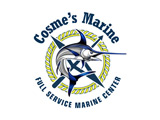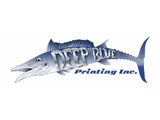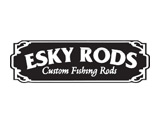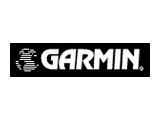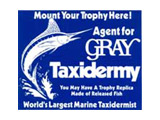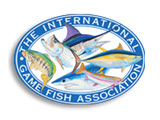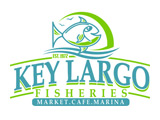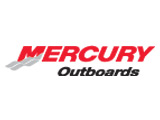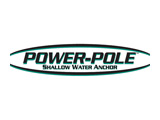The Atlantic Ocean – Fishery
The Atlantic Ocean has a dominate effect on the Key West fishery. The Gulf Stream emerges from the Florida Straits into the shallow waters of the Continental Shelf carrying plankton, the microorganisms that form the basic food of most marine life. Therefore, as the warm currents continue traveling in a general northeasterly direction from the United States coastline the natural food chain goes into full affect including baitfish, which becomes the forage for both bottom dwellers and pelagic species of migratory sport fish.
The small island of Key West resting approximately 100 miles off the mainland enjoys the Atlantic Ocean as our islands “front yard” and the Gulf of Mexico as our “back yard”. In Key West, we are blessed with some of the most prolific fishing grounds anywhere on the planet.
With regards to offshore angling, the Atlantic offers a completely different and diverse fishery from the Gulf of Mexico. With its much deeper water depths being obvious, the living Coral Reef is by far the most outstanding feature. The reef and our warm subtropical waters are the perfect combination for growing and sustaining a massive fish population allowing anglers from around the world to visit and pursue hundreds of sport fish species year round.
The offshore anglers has hundreds of miles of pristine waters, weed lines, color changes and currents to patrol while targeting the true big game species of the deep such as Billfish, Tuna and more. The iconic images of Hemingway’s Santiago “The Old Man and the Sea” fighting giant Marlin out in the Gulf Stream have helped create the world class fishing reputation of Key West.
Backcountry Fishing
Visualize mile after mile of pristine shallow waters flowing across flats and around isolated mangrove out islands while forming into bays and remote estuaries within the Great White Heron National Wildlife Refuge. These calm, protected waters and the flora and fauna of the estuary complete a sanctuary of immeasurable beauty and serenity for the outdoor enthusiast. The marine life, which calls the shallow waters of the backcountry home, is abundant and diversified from Stingrays, to Manatee and Dolphin. There is no better location to witness nature in all is glory. A trip into the remote backcountry is a step back in time and well away from the civilization of today.
To the angler, the Key West backcountry is the very pinnacle of world-class light tackle fishing. Legendary species roam these distant waters such as Tarpon, Bonefish and Permit from the flats. Redfish and Snook rule the mangrove island shorelines while Cobia patrols the natural channels, which meander for miles eventually leading to deeper waters. Massive schools of Sea Trout, Lady Fish, Pompano and Jack Crevalle govern the grassy bays and basins, all the while the Giant Barracuda and several species of Shark hold high court over them all. The backcountry waters are teeming with life.
The backcountry provides constant action throughout the day. Non-technical fishing by nature, even the first time angler will enjoy success here. For the experienced, these waters offer access to the ultimate challenge of fly-fishing as well. The backcountry is clearly the perfect choice for your family fishing adventure or a large group or corporate outing. The Key West backcountry leaves an indelible mark on the memory forever with all who experiences it…we journey through but leave no footprint. In Key West refers to a location as well as a form of light tackle fishing.
Bait fish
Here in Key West, we are extremely fortunate to have an abundance of bait fish. Pilchards, Threadfin Herring, Pinfish, Majua, Live shrimp, Blue runners, Speedos, Live Crabs, Live Mullet, the list goes on. We try to “Match the Hatch” when targeting specific species. Basically give the fish what they prefer and are used to eating. Using fresh, live baits can make all the difference in your days catch. Sometimes we set Pinfish traps the evening before or we spend a few minutes the day of the trip catching fresh live Pilchards or Threadfin. Our motto is the bait dictates the trip, when you have plenty of live baits, you simple catch more fish!
Big Game Fish
Salt water big game fish are typically pursued well offshore as sport by recreational anglers. Marlin, Sailfish, Swordfish and Tuna are usually some of the first species targeted by sportsman. Although several tournaments are contested each year in Key West for sport fish species, nearly all anglers today practice catch & release to improve the big game fish populations.
Trolling is the most commonly practiced technique by professional Captains and guides alike however deep drifting baits and kite fishing are also turned to when conditions warrant them. A common misconception is that only “deep sea” Sport fisher’s or heavy tackle boats fish big game species in Key West. This is completely false as the light tackle guides fishing from large state of the art center console boats outnumber the sport fishing vessels 100 to 1. Many of the most impressive big game catches each year in Key West are by notable light tackle guides.
Birds of Key West
Welcome to the Florida Keys National Wildlife Refuges. There are three Refuges in the lower Florida Keys: National Key Deer, Great White Heron and Key West National Wildlife Refuges. These Refuges are part of a subtropical Eco region and provide habitat for many species of birds, some of which are unique to the Florida Keys and south Florida.
All of the refuges were established to protect wildlife and their habitat. Great White Heron and Key West National Wildlife Refuges were established in 1938 and 1908 respectively, to protect herons and egrets from plume hunters. National Key Deer Refuge was established in 1957 to protect the endangered Key Deer and other wildlife.
The best times for birding are during the spring and fall migration. Some of the more unique birds that can be seen are great white herons, Antillean nighthawk, gray kingbird, black-whiskered vireo, white-crowned pigeon and the elusive mangrove cuckoo. Together, these three Refuges protect habitat for 285 species of birds.
Take care not to disturb nesting birds. This exposes eggs and young to extreme temperatures and predation.
Disturb wintering wildlife as little as possible, particularly during critical feeding and resting periods. They need all of their energy reserves to withstand the stresses of harsh weather and migration.
Boca Grande Channel
Boca Grande Channel is a narrow channel located just 17.5 miles due west from Key West. With its amazing white sand beach and awesome fishing the area is extremely popular with locals and well informed visitors alike. It is a roughly 6 mile across channel with everything from sunken wrecks, shallow sandbars and beautiful coral patches. It is the last major channel for Gulf and Atlantic waters to mix before you pass the Marquesas Keys to the west. This is a go-to spot for many light tackle boats on windy days in search of calm waters and lots of fish. The perfect spot to fish, catch some sun and just let the world go by…paradise!
Chum Slick
Here in Key West there are several types of chumming. By definition it is the art of releasing an attractant consisting of fish oils and flesh or ground-up fish by-products with specific oils added into the water to attract fish within casting range. Chum when properly used attracts fish and stimulates the fish into a feeding mode hopefully creating a feeding frenzy as the fish gather and become competitive for food.
Professional guides have his or her favorite attractant for their fishing grounds. Chum can be fresh, frozen, cut fish pieces, or scented with oils or sometimes blood, which quickly attract fish. What is used to chum depends on the fishing location, water depth, water clarity and species targeted.
Chum is typically dispersed into the water at a very controlled pace release by the use of dispensers such as buckets, chum nets or bags creating a slick or visible sheen on the water. Small particles of chum will stay suspended close to the water surface while larger chunks often times with fine sand particles added sink throughout the entire water column. It is imperative to use the proper type and amount of attractant or chum when targeting specific species.
Coral reef
Natural underwater reef structures made from secretion by living corals called exoskeletons which support and protect their bodies. Coral reefs are actually large colonies of tiny living animals found in marine waters that contain few nutrients. Most coral reefs are built from stony corals, which in turn consist of polypus that cluster in groups. Reefs grow best in warm, shallow, clear, sunny and agitated waters. Here in the Keys, we have the largest, living coral reef in North America, extending for more than 190 miles. Just inside of the main reef, we also have what is known as patch reefs, small almost circular coral formations that hole fish
Corporate Outings
Bringing a Corporate Meeting or Group to Key West?
Key West plays host to hundreds of Corporate Retreats and Getaways yearly. Many leading corporations hold annual meetings or management functions on the island. During these visits, often times “team building” exercises or just the opportunity to simply relax, have fun and charge the batteries while fishing as one large group is sought after.
As the largest charter fishing operation in Key West, we offer our FREE Group Planning Services. From waterfront resort lodgings & banquet room facilities to private charter fishing, we do it all for you. From weddings to Bachelor parties to friendly fishing tournaments for 10 guest or 110 guests, no charter operation has more proven success we do working in concert with top corporations from around the world.
Deep Sea vs. Offshore
In Key West, we make a distinction between our light tackle offshore fishing and Deep Sea fishing. The offshore waters of Key West and the lower keys are legendary as a “world class” fishing destination stemming from the by-gone era of Hemingway battling giant Blue Marlin in the Gulf Stream.
A common misconception is the belief that the terms Deep Sea and Offshore are referring to two different fishing locations. In fact, these are both general terms for the most part and this is not necessarily the case in Key West. The terms “Deep Sea” and “Offshore” typically relate moreover to boat design, equipment and fishing techniques, not species or distance from shore. Let us draw a comparison between the two…
Commonly when people speak about Deep Sea fishing they are actually thinking of large diesel powered sport fishing vessels fishing in extremely deep waters far from any land mass for large fish such as Marlin, Sailfish and Tuna. These boats are designed with a salon or air conditioned cabin and usually carry many creature comforts aboard for the passengers. Sport fisher’s are equipped with a high tower from which the captain controls the vessel providing excellent visibility of the surrounding waters. In the rear of the boat, an area called the “cockpit” contains a fighting chair and the boat is staffed with a “deck mate” to assist the angler. Fishing is done usually one angler at a time from the fighting chair with heavy action tackle called conventional gear. The most common technique is to attract fish to the many lures and baits placed in the water by trolling.
Light Tackle fishing guides to describe a similar fishing experience often use the term “offshore” vs. Deep Sea. The light tackle boats by design are more versatile for the angler while still providing the necessary creature comforts onboard. Although not equipped with the high tower or fighting chair these vessels are operated with a captain only at the helm. These vessels are quite capable of trolling as many lines and lures as a sport fisher, the light tackle vessel easily adapts to conditions and offer the angler several additional fishing techniques such as kite fishing or fly fishing.
The primary reason most anglers prefer light tackle boats when fishing offshore is based upon the ability for fast and efficient travel to the same distant fishing grounds yet allowing for more “lines in the water” fishing time during the day as well as the fishing equipment and tackle utilized.
It should be mentioned Sport fishing vessels are far more expensive to charter than light tackle boats generally.
Dolphin
Dolphins are marine mammals closely related to whales and porpoises and are quite common to Key West waters. Not to be confused with Dolphin fish also known as Mahi Mahi or Dorado, there are almost forty species of dolphin.
Dolphins vary in adult size from about 4 feet in length and 90 lbs., to 30 feet and 10 tons (the Orca or killer whale). Dolphin can be found worldwide in shallower seas of the continental shelves. Dolphins are carnivores eating mostly fish and squid. Dolphins are among the most intelligent animals on the planet.
The Dolphin’s often friendly appearance due to the “smile” of their mouth line, and seemingly playful attitude have made them very popular with Key West visitors and anglers alike as they are thought to be “good luck” when seen swimming in the bow wake of fishing vessels going to sea.
Dry Tortugas
The Dry Tortugas rest some 70 miles west of the island of Key West and are the absolute end of the Florida Keys. The fishing grounds near the Tortugas and Fort Jefferson are legendary for banner fishing days. Although several areas have recently become restricted to anglers, the Dry Tortugas are still well worth the time and expense to visit and fish.The light tackle angler has several options when heading west from the Key West Harbor. Frankly, most find it difficult to motor straight past the fabled Marquesas keys. These isolated mangrove islands rest just 23 miles from Key West and certainly offer outstanding fishing both shallow for Bonefish, Permit, Tarpon (in season) Barracuda and sharks or offshore for Snapper, Grouper and more table fare species. Make no mistake the Marquesas are magical but…there is nothing like going to the end of the road for the adventure hearted.
As you travel beyond the Marquesas Keys and well-known “Quicksands” areas on your westerly path you next arrive at Rebecca Shoals. This large channel can be difficult passage at times depending upon the day’s conditions. Continuing west, you eventually reach the Dry Tortugas.
Once there, you have unimaginable beauty over and under the sea. Fishing the patch reefs or numerous shipwrecks, snorkeling, it is always up to you.
Federal Permits
Another huge bonus when fishing with Key West Pro Guides, we are one of only very few operations in Key West that possess Federal Waters Charter Fishing Permits. You see, Key West today lies within a massive marine sanctuary extending well out into the Gulf of Mexico. The Gulf is home too much of the best wreck fishing to be enjoyed in the keys.
These Gulf waters are dissected by several invisible boundary lines forming Federal Waters, State Waters, numerous “no-enter” zones and “no-take” zones, all very confusing but with our Federal Permits, Key West Pro Guides can legally take you to where we know the huge populations of fish are. Without these Federal Waters permits, the other charter operators must either remain much closer inshore, fishing lesser locations pressured daily by guides with clients as well as locals alike or run the risk of fishing with guests illegally.
Some guides currently are simply not mentioning these facts to inquiry guests and crossing their fingers.
Feeding Frenzy
A feeding frenzy is a situation where a large amount of forage or baitfish leads to rapid feeding by schools or gathered numbers of otherwise solitary fish. In Key West, a large school of fish can attract predators such as sharks to enter a feeding frenzy. This may cause the sharks to become super aggressive and competitive for the food, often times striking anything that moves in the water including other sharks.
Flats Fishing
Flats’ fishing is a rather technical approach to very shallow water angling. On the flats, the angler is sight casting to nomadic fish with light tackle spinning gear or fly rods. Working together with a professional guide aboard a small “skiff” boat propelled by stealthily “poling” across mere inches of water the sport is one part fishing and one part hunting. Pursuing Bonefish, Permit, Tarpon and often times Barracuda and Sharks the flats angler appreciates the art of locating and catching the most elusive and “spooky” shallow water species in the Florida Keys.
Flats fishing is not about catching large numbers of fish but rather experiencing the culmination of first locating then hooking and landing the most elusive and some of the fastest swimming fish in the ocean on the lightest of tackle. Flats fishing should not be confused with “back country” fishing while in Key West. These two are vastly different fishing experiences.
Florida Keys
The Florida Keys are an archipelago in the southeast United States. The keys begin about 20 miles south of Miami and extend to Key West, the westernmost of the inhabited islands, and on to the uninhabited Dry Tortugas. The islands or “keys” rest along the Florida Straits while dividing the Atlantic Ocean from the Gulf of Mexico.
The southern tip of Key West is merely 90 miles from Cuba. The Florida Keys are between about 23.5 and 25.5 degrees North latitude, which places them in the subtropics. The climate of the Keys however is tropical year round.
Florida Straits
The Straits of Florida, Florida Straits, or Florida Strait is a body of water located south-southeast of the North American mainland generally accepted to be a dividing line between the Gulf of Mexico and the Atlantic Ocean. Positioned between the Florida Keys and Cuba, it is 93 miles wide at the narrowest point between Key West and the Cuban shore. The strait carries the Florida Current, the beginning of the Gulf Stream from the Gulf of Mexico. The straits also host the remains of the sunken USS Maine.
Flats Grand Slam
In Key West a Flats “Grand Slam” is when an angler lands a Bonefish, a Permit and a Tarpon during one days fishing. The International Game Fish Association defines an Inshore Grand Slam as catching any three of the four species on the same day from Bonefish, Permit, Tarpon or Snook.
Fly Fishing
“A strike on fly is a moment of amazement known only to those who seek it”…
The fastest growing segment of angling today is fly-fishing. Whether it is the art of a perfectly presented cast or the primal appeal of hand-to-hand combat, fly-fishing is undeniably addicting. To challenge the behemoths of saltwater to many is the pinnacle. A fly rod is used to deliver an artificial “fly” or lure in the most nature way to visible fish in Key West. Fly fishing equipment has little similarity to light tackle spin fishing equipment.
Key West offers the adventurous fly fisher several options to pursue their trophy. From the pristine waters of the flats, home to the “Gray Ghost” Bonefish, the elusive Permit or the awe-inspiring “Silver King” Tarpon, to the azure offshore waters lair of the Billfish “denizens” of the deep. It all waits here for you.
A few tips as you consider or prepare for an upcoming fly charter. Practice-Practice-Practice before you arrive. Do not expect to learn to cast, fight fish and enjoy success during a single charter. This is where we enjoy skills learned previously from instruction and proper practice methods. Never learn on the water…begin your instructions on the grass at home preferably with a certified instructor.
Fly-casting is arguably the prerequisite of successful and enjoyable fly-fishing. Without the ability to successfully present your fly to the fish failure is likely.
Almost without exception fly casters have a single ambition in their casting – to cast further. Yet practice as they may, distance seems to increase so slowly, and at such effort.
All too often even the experienced fly caster is making basic errors, errors ingrained by hundreds, if not thousands, of hours of repetition. The easiest method of identifying these errors is by means of lessons from a qualified casting instructor.
The five basic essentials for successful of fly casting are:
- The elimination of slack line is the most efficient manner in which to cast a fly line;
- Proper acceleration of the fly rod;
- Efficient loop formation requires the caster to move the rod in a straight-line path to the target;
- The size of the casting stroke is generally determined by the length of the line to be cast; and
- There must be a pause that may vary in duration at the end of each back cast and forward cast.
If the caster does not understand these basics…take some lessons. Do not frustrate yourself and otherwise ruin the opportunity to fish in a world class-fishing destination with a top pro guide. Fly-fishing is wonderful and a passion for many anglers. However, please keep in mind not one of them learned or became proficient overnight or while on a charter, I promise you.
Gray Ghost
Bonefish are considered to be among the premier light tackle & fly-fishing species in the shallows and are highly prized by anglers. Silver in color with a dusky appearance to the fins commonly with a touch of yellow on the pectoral fins. This mirror like appearance is what provides the Bonefish with amazingly affective camouflage. No question this is where the nick name of “Gray Ghost” of the flats originates. Bonefish without question are super fast swimmers and may be pound for pound as strong as any saltwater fish species.
Great White Heron National Wildlife Refuge
Great White Heron National Wildlife Refuge was established in 1938 as a haven for great white herons, migratory birds, and other wildlife. The refuge is located in the lower Florida Keys and consists of almost 200,000 acres of open water and islands that are north of the primary Keys from Marathon to Key West. The islands account for approximately 7,600 acres and are primarily mangroves with some of the larger islands containing pine rock land and tropical hardwood hammock habitats. This vast wilderness area, known locally as the “backcountry,” provides critical nesting, feeding, and resting areas for more than 250 species of birds.
Great White Heron NWR is accessible only by boat. However, the refuge is administered as part of the National Key Deer Refuge headquartered on Big Pine Key, which is 100 miles south of Miami. The visitor center is located ¼-mile north of the traffic light on Key Deer Boulevard in the Big Pine Key Shopping Plaza.
Gulf of Mexico – Fishery
Although the Atlantic Ocean with its dominate Gulf Stream and natural reef help to create the amazing fishery we enjoy here in Key West, the Gulf of Mexico certainly plays an equally large part in forming our world class fishing.
The Gulf being an “ocean basin” is roughly surrounded by the US coastline, The Yucatan Peninsula and borders Cuba to the south. The Gulf brings to our local waters its own fascinating features far different from the Atlantic although these two bodies of water essentially lay on opposite sides of our small island just two miles wide divided by the Florida Straits leading to the Caribbean Sea. Just 810 nautical miles wide, the Gulf is largely an oval with a rather featureless soft bottom consisting of sediment and rock. Essentially the Gulf is that of a bowl with few bottom contours. Near Key West, the water depths of the Gulf only very gradually increase over many miles. This shallow featureless bottom contour is exactly why the numerous shipwrecks hold such massive populations of fish. The wrecks are the only irregular feature fish can relate to for the most part and therefore become huge magnets for the fish. However, these same features are responsible for requiring the angler to make long-range travel necessary at times, if deeper water wreck sites are his ultimate goal.
The Gulf is synonymous with shallow water depths. The Gulf side of Key West and the lower Florida keys is home to our shallow backcountry and much of our renowned flats fishing. The backcountry runs parallel to the lower keys for nearly 100 miles and encompasses countless Mangrove islands forming thousands of small shallow bays, basins and vast flats while slightly deeper natural channels meander the entire length of the backcountry eventually leading to open water. Nearer to the island of Key West the Great White Heron Wildlife Sanctuary, a National Marine park is found.
The Gulf tidal movements are far less exaggerated than those of the Atlantic but all of Key West experiences semi diurnal tides meaning two highs and two low tide points during every 25 hours with one being the major the other a lesser or minor movement of water. This constant water movement passing through the mass of mangrove islands help filter the saltwater providing our crystal clear water clarity anglers come from around the planet to fish.
Moving offshore deeper into the Gulf the angler reaches many fabled fishing locations. Remote and isolated from any inhabited areas of the Florida keys these spots receive little if any fishing pressure allowing the population of numerous species of fish both resident and pelagic to flourish. The Gulf is recognized as an exceptional shipwreck and patch reef fishery. Renowned fishing locations such as the Marquesas Keys, The Quicksands, Rebecca Shoals Channel, New Ground, Tail End Buoy and the Dry Tortugas are all found in the Gulf of Mexico.
Gulf Towers
Key West is clearly home to the very best fishing of all the gulf coastal states. What makes this a fact is the diversity of fishing for the light tackle angler in this fascinating body of water. One of the most amazing opportunities to experience fishing the distant Gulf of Mexico waters are known simply as “The Towers”.
Well offshore sit 5 Air Force communication towers, isolated, literally in the middle of nowhere. Huge structures, resting in deep water offering the only safe haven for miles, attracting the numerous species that populate these remote regions. The seldom fished towers offer unparalleled action for Cobia, Permit, Snapper, Grouper, Kingfish and Barracuda among others species that call these nearly inaccessible fishing grounds home, year round.
As these towers are located well beyond the 9 mile State water boundary lines, Federal Gulf of Mexico Charter Boat fishing permits are required to fish and/or keep from the towers. Key West Pro Guides is one of only a very few operations in Key West possessing these valuable permits. Angler Beware! For most guides without these permits this has becomes a “don’t ask-don’t tell” sensitive issue. Therefore, these Federal permits are rarely if ever mentioned to prospective clients. Having these permits is a sure sign of a long established, quality operation.
Gulf Wrecks
Wreck fishing in the Gulf of Mexico can be one of the most productive day fishing trips in Key West with 200 plus known shipwrecks easily accessible from our docks. There is several shallow water or near-shore shipwreck sites, which provide a completely different fishing experience from the offshore or deeper water shipwrecks in the Atlantic. These shallow wrecks offer the light tackle angler many options in presentation. Commonly we produce explosive strikes at or near the surface by casting live baitfish or lures to visible cruising fish. Fly fishers can cast artificial flies with success as well. Barracuda, Jack Crevalle, Cobia and Permit are but a few of the many species calling the Gulf shipwrecks home.
The most productive Gulf wreck sites although being in much shallower waters on average than the Atlantic wrecks can be well offshore with 15 to 35 mile runs by anglers being common. The “Gulf wrecks” are renowned Permit and Cobia spawning grounds. Bull sharks are plentiful as well. In the Gulf, a mixed bag of species caught by days end is routine making for an exciting fishing experience.
Hemingway’s Santiago
The Old Man and the Sea is a novel written by Ernest Hemingway in 1951 while living in Cuba. The story was published in 1952. It was the last major work of fiction to be produced by Hemingway and published during his lifetime. One of his most famous works, it centers upon Santiago, an aging fishermen who struggles with a giant Marlin far out in the Gulf Stream. The Old Man and the Sea was awarded the Pulitzer Prize in 1953 and was cited as contributing to the 1954 awarding of the Nobel Prize for literature to Hemingway.
Key West Harbor
The World Famous Key West Harbor
The Key West Harbor is by day a cruise ship port of call bringing thousands of visitors to the southernmost city in the Continental United States. The harbor yearly has hosted excellent Power Boat Racing to vintage sailing vessel competitions, Jet Ski’s to parasailing enthusiasts. Mallory Square famous for the nightly sunset celebration witnessed by thousands of “snow birds” every evening overlooks the harbor. However, the magic of the Key West Harbor comes after sunset during the twilight hours from March through July every year. This is the time of behemoth Tarpon. The inspiring “Silver King” pursued by anglers from around the world flood into the harbor.
The Key West harbor has the finest Tarpon fishing in North America. Massive numbers of Tarpon arrive during their yearly spawning migration taking up residence in the harbor and providing the light tackle angler the most prolific Tarpon fishing anywhere on the planet.
Early mornings offer some excellent Tarpon action as well however most knowledgeable anglers will agree, nighttime in the Key West harbor is unforgettable. Anchored close enough to the island to enjoy the music of Duval Street the angler waits as large Tarpon begin to “roll” on the surface feeding on the forage carried along by the tidal flow. Within minutes, hundreds of Tarpon can surround your boat and the action can be non-stop with Tarpon that can exceed 200 pounds!
Key West
Key West is located at the very end of the Florida Keys archipelago just 90 miles from Cuba. The island is just 4 miles by 2 miles in size but is home to some of the best and most diverse angling opportunities in the world. 400 species of big game and sport fish to migrating pelagics live or migrate through our local waters. In excess of 200 International Game Fish Association (I.G.F.A.) “World Records” have been caught in the waters near Key West. Why? Because our beautiful “Island City” sits at the confluence of three major ocean entities: the Gulf of Mexico, the Gulf Stream and the Atlantic Ocean.
Lakes Passage
Lakes Passage is a shallow passage way traveling west from the Key West harbor towards the Boca Grande Channel and the Marquesas Keys. Located from just outside the harbor running for some 12.3 miles west the Lakes Passage is often used by smaller fishing vessels or especially in the event of foul weather offshore.
Light Tackle Boat
Light Tackle Boats are an intricate part of light tackle fishing. Fast, efficient and extremely versatile boats that traverse the distance to the most remote fishing grounds quickly and comfortably with a smooth and dry ride. These boats fish the same waters catching the same fish species as Hemingway did in a bye-gone era! “Light Tackle” boats are typically large “center console” vessels ranging in length from 27′ to 33′ overall capable of accommodating up to six anglers. Gasoline outboards power these craft, therefore no diesel fumes to content with. Light tackle boats are not equipped with fighting chairs or tall “towers”. These boats are designed for stand up fishing by the angler often assisted by a belt harness on larger fish. The design of a center console boat allows several anglers to enjoy “hands on fishing” simultaneously. These boats do not operate with additional deck mates keeping charter costs down. Thought has been given to creature comforts onboard such as t-tops for shade, marine heads when nature calls, large built-in coolers with separate “fish boxes” stopping cross contamination of ice, food and beverages. Multiple large live wells for bait are common. The Key West Pro Guides fleet consists of immaculately maintained, state of the art, fully equipped and specifically outfitted boats. All carry the finest in marine and safety equipment onboard with leading edge technology at the Captain’s fingertips. We run the Ferrari’s of Key West charter vessels!
Light Tackle Fishing
We’re often asked what we mean by “light tackle”. It’s easier to tell you what isn’t a part of our style of fishing. There are no fighting chairs on our boats, no full harnesses, we don’t “gun the engine” in order to set the hook, none of our boats have a tuna tower, they are all single story with not a skyscraper in sight.
All of our boats have a great selection of top class tackle to suit all styles and methods. With tackle from companies such as Shimano, Daiwa, Penn and ABU you can be sure that you have the very best fishing tackle to use in your quest for that next monster.
Obviously you don’t use the same tackle for all styles of fishing, what light tackle fishing offers is tackle balanced to the fish that you’re likely to hook. Thus we might use 10 lb leader when fishing for Yellowtails whereas we’d have 50 lb leader for Tarpon.
Without doubt, one of the most exciting styles of fishing is where you put a live pilchard or threadfin herring on the hook and let it drift behind the boat with no weights on the line at all. You have absolutely no idea what might come along next. It could be a sailfish, cobia, kingfish, tuna, shark, snapper or quite a few other species; you just can’t be sure what is going to bite next.
You don’t need to worry about the technicalities of all this tackle talk; the skipper will set everything up so that all you have to do is actually fish.
The term “light tackle” with regards to fishing equipment refers to tackle that is finely balanced to the fish you are targeting. For example…Tarpon gear vs. Sea Trout gear would clearly be very different from one another but both would be balanced to the size and weight of the fish providing the angler the ultimate fishing experience. Light tackle does not mean “weak” tackle. Light tackle fishing in Key West typically is referring to spinning gear (rods and reels) or at times “level wind” convention gear if offshore. “Bait caster” equipment commonly found in freshwater angling is available for our guests upon request however it is not our first recommendation. Fly fishing is considered separate from this definition. Key West Pro Guides provides only top of the line equipment by the industry’s leading manufacturers.
Mallory Square
What and where is the Sunset Celebration in Key West?
Nightly about two hours before sunset masses of visitors, locals and street entertainers gather at the Mallory Square Dock over-looking Key West Harbor. This is the world famous Key West Sunset Celebration!
The participants range from exhibitors of arts & crafts, to street performers, musicians, psychics, plenty of great food carts and of course, thousands of people all there to witness the sun sink below the horizon in the Gulf of Mexico.
This multicultural event has been going on for years and is at the very heart of the Key West lifestyle. Where else does time stop just to celebrate another day in paradise…and after the sun passes the nightlife begins on nearby Duval Street and throughout the Historic Seaport District.
Sunset Celebration is a cannot miss happening and you should plan to be there!
Man of War Harbor
Man of War Harbor is a bay located just 2.2 miles from Key West. Renowned shallow fishing location for Tarpon, Sea Trout, Redfish and more. Light tackle & Fly fishers frequently visit this area near the island of Key West for a quick stop on the way to more remote fishing grounds. It’s numerous wrecks and shallow ledges consistently hold many common deeper water species. In Tarpon season this is a very popular spot, with its many deep holes, some to more than 26ft, compared to the surrounding flats just yards away.
Manatee
Manatees are common to Key West waters. Manatees are aquatic, mostly herbivorous marine mammals sometimes referred to as “sea cows” with a face only a mother could love. Manatees although very gentle creatures by nature do grow to a large size measuring up to 13 feet and weighing as much as 1,300 pounds. Manatees have paddle-like flippers, often rest or sleep at the waters surface and enjoy drinking fresh water by the gallons. Oddly enough, the name manatí comes from the meaning “breast”.
Mangroves
The Key West backcountry is home to countless Mangrove islands. Mangroves are various kinds of trees up to medium height and shrubs that grow in saline coastal sediment habitats in the tropics and subtropics. In Key West, we primarily deal with Mangrove islands and swamps, which are found in most tidal areas and marine shorelines. Once established, mangrove roots provide an oyster habitat and slow water flow, thereby enhancing sediment deposition in areas where it is already occurring. Mangrove swamps protect coastal areas from erosion and storm surge especially during hurricanes.
The mangroves’ massive root systems are efficient at dissipating wave energy. Likewise, they slow down tidal water enough so its sediment is deposited as the tide comes in, leaving all except fine particles when the tide ebbs. In this way, mangroves build their own environments. Because of the uniqueness of mangrove ecosystems and the protection against erosion they provide, they are often the object of conservation programs.
The unique ecosystem found in the intricate mesh of mangrove roots offers a quiet marine region for young organisms. In areas where roots are permanently submerged, the organisms they host include algae, oysters, sponges, and bryozoans, which all require a hard surface for anchoring while they filter feed. Shrimp and Mud Lobster use the muddy bottoms as their home. Mangrove Crabs mulch the mangrove leaves, adding nutrients to the mangal muds for other bottom feeders.
Several marine creatures relate to the Mangroves for numerous reasons. As shelter, a food source, protection from predators, as spawning beds, the list in nearly endless. One thing for certain…Mangrove islands relate to fishing in a big way. Where there are Mangroves, there will be fish. And where there are fish, there will be Key West Pro Guides.
Marquesas Keys
The Marquesas Keys are legendary as a world class light tackle fishing destination. Located approximately 30 miles west of Key West just beyond the Boca Grande Channel, the Marquesas Keys are 36 miles east of the Dry Tortugas, which is the farthest key traveling west, in the entire Florida Keys chain.
The fabled center lagoon is named Mooney Harbor. With water depths, ranging from 1′ to 5′ on average the harbor offers exceptional flats and shallow water angling for Tarpon, Permit and Bonefish among other elusive species. During the Tarpon spawning migration from March through July the harbor and channels are home to a vast population of “Silver Kings”. During the winter months, the harbor holds massive populations of large Barracuda.
The northernmost key is the largest and is has a small sandy beach free of mangroves. It is often referred to as Entrance Key. This island or “key” surrounds the lagoon to the north and east sides. Smaller adjoining keys to the south are Gull Key, Mooney Harbor Key and about 4 unnamed keys in the southwest corner of the islands. From older maps, some of these keys were once referred to as Button Key and Round Island. The channels that flow in and out of the harbor are well known for their large shark populations including the super aggressive Bull Shark and Key West’s apex predator, the Hammerhead Shark.
On the outside the Marquesas Keys plentiful coral heads and ledges hold massive populations of Snapper and Grouper at times. Live bait bottom fishing in this area can be extremely productive.
Because of its remote location, Marquesas Keys charters are offered as full day only trips. However, it is this isolation which causes the fishing grounds to receive very little fishing pressure in general. Many days anglers may find they are alone in the Marquesas. For this reason, it is wise and highly recommended to fish the area with a professional guide intimately knowledgeable of the area as are many of our pros. There is no cell phone service there and radio transmissions can be limited. Weather must always be a consideration when planning a trip to the remote Marquesas Keys. On days where weather and/or water conditions do not allow safe passage to the Marquesas you will enjoy fishing closer to Key West at our normal charter rates at the Captain’s discretion.
Moon Phases
Moon Phases and how they affect fishing…
Before I jump into the explanation of how the moon phases affect fishing, we need to understand just how the moon affects our tides as well. We all remember from grade school that the moon orbit’s the earth and the earth orbits the sun right? The earth spins as it orbits the sun and a complete rotation takes 24 hours, one day. A complete orbit of the earth around the sun is therefore I year. Got it so far?
Both the moon and the sun have gravitational influences on the earth, which is where our tides come from. The moon “pulls” the water towards it so as the moon travels around the earth the pull “lessens” and allows the tides to reverse. The sun does play a major role in all of this, as the alignment of all three takes place we experience “spring tides”. This is when we have our highest highs and lowest lows. Therefore, when the sun and moon are at opposite angles, we have far lesser pull on the tides and they weaken creating “neap tides”. Both however have amazing effects on fishing some advantages and some disadvantages.
I have come to understand there are eight phases of the moon:
- New Moon
- Crescent Moon (waxing)
- First Quarter
- Gibbous Moon (waxing)
- Full Moon
- Gibbous Moon (waning)
- Last Quarter
- Crescent Moon (waning)
Now let us explore tides and just how they work. The moon actually takes 24 hours and 50 minutes on average to orbit the earth. So on any given body of water if you were to stay in exactly the same spot it would be I day plus 50 minutes before the moon was in exactly the same position relative to you. Therefore, our tides must run approximately 50 minutes different or “later” every day. If high tide is a 1 o’clock today tomorrow it will be 1:50 got it? Now this is an approximation so I certain there are bodies of water which will actually be slight different from this example and this is easily determined by the amount of time you experience “slack tides’ or still water.
Fishing and the tides are clearly combined. However, there is certainly an affect from the sun and moon on the fish as well, beyond simple tidal movements. Feeding times as well as spawning times can be tracked and will be the major factor in determining the angler’s success. Here is a way of determining just how good the fishing will be as taught to me by my father. Although I am not sure if Dad was familiar with exactly how all of these gravitational affects worked…he understood as he put it: “Son, when the moon is straight over your head or directly under your feet the fishing is good”. He’s correct and you can find this same information (maybe more eloquently said) in the Fisherman’s Almanac. The almanac goes on to explain that when the moon is half way between these two points there will be a minor activity period as well. So what this all means to you and I as anglers is simple. We can determine and expect a period of feeding activity every day when the moon is directly above and direct below our feet (this is the major cycle) and when the moon is half way between this will be our minor cycle of activity. Two major and two minor periods for us to key on. Keep in mind only one of each may be during daylight hours.
Now we come to what this all means with regards to fishing. Although I have referred to the Fisherman’s Almanac since it was first given to me by my father the best and most dependable information I have taken away are the major and minor times of the day. These typically are on the money. “Best” days or “worst” days also indicated in the almanac well…not so much. As a professional guide here in Key West for several years fishing the flats and shallow waters of the back country this was invaluable information.
I have study extensively about this subject and recall reading about the indigenous people of the Pacific and how they were thought to be responsible for establishing the relationship between the moon and fishing. When your life depends on catching fish just to survive, I bet you become a pretty good fishermen and quickly!
Mooney Harbor
Mooney Harbor is a hidden lagoon/bay located just 22.2 miles due west from Key West, in the Marquesas Keys. The Marquesas is an atoll rising from the ocean floor well away from the beaten path. Anglers for years have praised Mooney Harbor for its excellent shallow water angling as well as its breathtakingly beautiful scenery. Many who have visited the remote location have an almost spiritual experience while there. Could this be Heaven on earth?
New Ground
New Ground is a bar located 26.2 miles west from Key West harbor. Fabled as a productive fishery, in a very remote area. There are no inhabited areas closer than the island of Key West. New Ground depths range from 8ft at the shallowest to 45ft on the edges. A very popular spot for spearfishing and diving. There are several shipwrecks located around this reef, the most famous being the Henrietta Marie, an English merchant slave ship that sank on the reef in the summer of 1700.
Northwest Channel
Northwest Channel is a large, deep channel located just 5.3 miles from Key West. Typically used for commercial and fishing vessels especially when traveling towards the southwest coast of the mainland of Florida. The jetties located just a few miles from the harbor always provide good light tackle fishing action. The channel has several wrecks and numerous ledges, all home to an abundance of species throughout the year. It is the first deep channel for fish to migrate from the Atlantic to the gulf for more than 45 miles from the east. The flats on both side of the channel are excellent Tarpon and Permit fishing ground, with the deeper holes in the springtime holding large schools of Tarpon.
Offshore Fishing
If your impression of offshore fishing is that of Hemingway’s Santiago, or of “deep sea” fishing boats complete with fighting chairs, heavy tackle and mates…you may be a nostalgic angler but welcome to the future…today…offshore fishing is a sport on the leading edge of technology. State of the art, light tackle fishing equipment now levels the playing field between the denizens of the deep blue and the knowledgeable angler.
With Key West Pro Guides, anglers pursue the “Big Game” fish aboard modern center console light tackle vessels. Fast and efficient fishing machines completely equipped and outfitted to do one thing, provide the angler a “fighting chance” against the speedy Wahoo, Sailfish and Blackfin Tuna of the Atlantic Gulf stream.
Offshore fishing is an arena for battle unlike anywhere else. From the color change to the weed lines, the light tackle angler’s armament of weapons consist of high tech kite fishing to controlled trolling to basic drifting, free lining live baits into the depths. This is a hands on approach to hooking and fighting trophy fish of a lifetime. Offshore with its spectacularly visual strikes at the surface to the natural presentation and thrill of the “take’ way down deep, the adrenalin rush is unequalled.
Chase the elusive Wahoo and Kingfish or go head to head with the imposing Dolphin. Test your nerve with the menacing Giant Barracuda or the ultimate intimidator of the open ocean depths, the shark. Offshore fishing is an adventure like no other and there is no better location on the planet to experience it than Key West. This is world class angling at its finest!
Out West
If you were to ask any knowledgeable angler for a short list of the very best fishing locations in the world, Key West would surely be on that list. The waters around our island are some of the most abundant and prolific fishing grounds on the planet. We are blessed as The Atlantic Ocean with its Gulf Stream’s amazing currents carry Marlin, Sailfish, Dolphin, Tuna and Wahoo among many species of pelagic fish to our front door. The Gulf of Mexico resides at our back door with its miles of pristine flats and backcountry near shore and the countless shipwrecks and patch reefs offshore. The Gulf of Mexico offers every light tackle angler world class fishing experiences. The Florida Straits bring these two bodies of water together and collectively they become an angler’s paradise, unequalled anywhere.
However, the ultimate fishing adventure in Key West may very well lie far offshore to the west, in the Gulf. Many of these remote and isolated locations I speak of are not on maps. Some known areas are simply too much of a challenge for less experienced professional guides. Others distant fishing grounds may only be known to our second and third generation guides, having been past down from father to son over the many years. Discovered years ago by commercial fishermen these distant fishing grounds are now available to you, if you are ready!
Mention fishing “Out West” on any dock in the keys and heads will turn. Fabled locations known only by name to most…Tail End Buoy, Rebecca Shoals, New Ground, The Towers and of course the Marquesas and Dry Tortugas. These remote areas are home to literally thousands of shipwrecks, patch reefs , ledges and miles upon miles of shallow flats teaming with fish that have never seen a hook! There are no footprints to follow in the sand.
The angler must be ready to commit to traveling 30 to 70 miles offshore to the west and southwest of Key West. These trips are not for the faint of heart or novice angler. This is hands on light tackle angling that requires ability and experience beyond that of a weekend fishermen. If you are ready to battle the very largest fish and to catch the most fish of your life…let’s go west!
Palolo Worm Hatch
Okay friends…pull your hat way down over your ears and get ready…the ultimate Tarpon fishing action of the entire spawning migration here in Key West is about to happen. You have just enough time to plan your trip or quit your job whatever it takes to get to the island for the phenomenon known locally as the “worm hatch”.Most avid Tarpon anglers have at least heard about this amazing event and those who have actually experienced it probably have already booked their charters with us to relive it all over again.
Taking place in May, June and typically again in July the Palolo Worm spawns or “hatches”. This brings about an absolutely amazing feeding frenzy with behemoth Tarpon. Palolo Worms call isolated “patch reefs” of coral, marl or rocky bottom home. When the waning moon phases and the outgoing evening tides get right…these worms “hatch” coming to the surface by the millions. Tarpon go insane for them in a totally unimaginable way. The moving waters will explode with so many Tarpon rolling and “sucking” these worms from the surface, you simply cannot believe your eyes!
This is the pinnacle for Tarpon fishing my friends. It simply does not ever get any better than this. Fly Fishers…this is your time as well! Novice anglers will enjoy unlimited success…if a “Silver King” is on your bucket list…pick up the phone and call us direct at 866 259.4205 from 7 AM to 11 PM daily and book your Tarpon trip today!
To explain a “waning moon” it is simply when we move from the Full Moon of the month towards the New Moon. This is about a 15-day long phase. Although no one could guarantee the exact timing of the hatch these are the windows for it to most likely occur.
| 2013 Schedule: | |
|---|---|
| May 5-Full Moon | May 20-New Moon |
| June 4-Full Moon | June 19-New Moon |
| July 3-Full Moon | July 18-New Moon |
Patch Reef
This is a type of natural reef that is an isolated, comparatively small reef outcrop, often circular and surrounded by sand or sea grass. Patch reefs are common in the shallows and near-shore in Key West. Patch reefs typically hold a population of fish consisting of several species co-mingling. The majority of the patch reefs are located to the south of the island chain, between the mainland and the main reef. There are literally thousands and thousands of patch reefs; many have never been fished before. In the wintertime the deeper patches hold incredible amounts of fish, in the summertime they make for awesome dive and snorkel spot.
Pearl Basin
Pearl Bank is a basin located just northwest of Key West harbor. An early Tarpon fishing location also home to great shark action Pearl Basin is a favorite of many of the top professional guides in Key West. Shallow water depths with outstanding clarity Pearl Basin is fished daily by locals and visitors alike.
Pelagic Fish
What are pelagic fish?
We have all heard the term pelagic when speaking about salt-water fishing but do you really understand exactly what pelagic means? Most professional guides have a somewhat correct understanding, just not a complete knowledge of the term. Like any avid angler, I enjoy studying about the sport we all have such a passion for so let us explore the term pelagic together.
The word pelagic may refer to any fish that lives at or near the surface to middle of the water column in coastal, ocean and lake waters but not on the bottom. On the other hand, the word pelagic may refer to a marine environment, which is the largest habitat on earth. Some 330 million cubic miles of water and home to 11% of the known fish species on the planet…not a bad place to wet a line!
Pelagic fish are easily divided into two groups. Those that are known as Coastal or what I call “inshore” species are the fish living in the shallows and sunlit waters above the Continental Shelf and the Oceanic or “offshore” species, which inhabit the vast depths of the waters beyond.
Pelagic species range in size from forage fish such as Herring and Sardines to the apex predators like Sharks. Typically, pelagic species share a streamline body and are capable of sustained long distance migrations. Most pelagic species are schooling fish yet the largest are usually more solitary oceanic nomads feeding on smaller pelagic forage, often times following schools of baitfish for days. An example of these larger pelagic fish would be Billfish, Tuna, King Mackerel, sharks and even Rays.
Although Tuna in particular are of major importance to commercial fisheries most large pelagic species are game fish such as Marlin and Swordfish. Key West waters seasonally can host massive populations of several different pelagic species at the same time. My friends now armed with this complete understanding of the term pelagic, are you ready to go head to head with them?
The Key West Pro Guides team is ready when you are. We enjoy targeting large pelagic species for our anglers and have a long history of coming through with them. Which pelagic species interest you?
Pink Gold
The term “Pink Gold” refers to shrimp found in the Gulf of Mexico. Commercial “shrimping” has been a way of life for many residence of Key West for nearly the past one hundred years. “Shrimpers” dedicate long hours at sea to collecting of shrimp by trolling large nets across the ocean floor at night. After culling the valuable shrimp from the by-catch the shrimp are sold at the market price by the pound typically to wholesalers. In the past, the pinkish colored shrimp have been as valuable as gold to Key West, hence the term Pink Gold.
Americans alone consume more than 1 Billion pounds of shrimp per year, which comes out to over 4 pounds per person annually. That’s a lot of shrimp! So, where does it all come from. It’s interesting really. The Gulf of Mexico supplies about 25% of the national consumables and the rest is largely imported from Thailand, Vietnam, China, Ecuador and Brazil.
Professional Guide
I feel it would be safe to say that since you are reading this, you have an interest in fishing. Likely, you have enjoyed the sport as a hobby first, and have moved down the conveyor belt towards enthusiast. If not already, you will soon move on to joining a circle of friends that share your fishing interest. From there my friend, you step off into the abyss of addiction. You will be officially addicted to the sport of fishing.
You will spend every available minute either on the water fishing or in pursuit of fishing knowledge. You will find yourself delving into the world of high tech fishing gear and equipment. You may wake to find you are the owner of a new fishing boat some morning. You might develop an unexplainable competitive edge to your personality with tournaments becoming a part of your fishing world. Certainly, Saturday morning television fishing programs will wear out the Ti-Vo.
Your vocabulary may very well change and grow to include terms like “retrieval ratio’s” and “braid over mono” among many, while some no doubt will be adapting a strong “southern accent or drawl”. You will become suspect of everything your fishing friends tell you because you have accepted that “all fishermen exaggerate except you and me…and you’re not really sure about me yet!
You could grow an appreciation of brightly colored baseball caps and camo apparel. You will begin to spend inordinate amounts of time “hangin’ around” the local bait shops and tackle stores. Your reading materials will have morphed from the Sports Illustrated Swimsuit issue to the Bass Pro Shop’s catalog. You will prefer the smell of live bait to aftershave. By this point friend, you have a full-blown passion for fishing…you have reached Mecca, Ground Zero of becoming a guide.
All guides share a similar path to the door of taking people fishing for a living. Here however is where guides do begin to differ and differ greatly. Most guides would consider themselves good anglers. Most would feel strongly they have fishing skills and talents well beyond the novice and I would certainly agree with all of that. As a professional guide, myself for over twenty years now I can first hand testify to the hard work and long hours guides put in. You always seem to be tired, hungry and have a wet ass! It is a labor-intensive career but not without rewards. I do not know any guides personally that drive Ferrari’s but we do have one hell of a view from our office windows!
No, it is nothing in the work ethic, talent or knowledge that sends the best guides straight to the highest rung of the ladder. I believe the missing element for most guides is in their “people skills”.
Being a great fisherman is important, expected, but the quality of a charter-fishing trip should never be soley about how many fish were caught. It is about the overall experience. The minutes between hauling fish into the boat must be enjoyable as well. Every guide on the planet should realize when you booked your first charter you just stepped through the rabbit hole of “hospitality”. You are now in the hospitality business
Rebecca Shoal
Rebecca Shoal Channel is located just 27.3 miles from Key West. Renowned as a prolific fishery experiencing little fishing pressure by recreational fishermen. It is recommended that a professional guide be hired when traveling to this location. At one point a very nice light house was located on the shoal to warn boats of the shallow reef. Today all that remains is the metal supports. It is an excellent snorkeling/diving spot teaming with fish
Reef fishing
Reef fishing in Key West is a favorite sport among locals and visitors alike. The Atlantic Ocean is home to an immense natural living coral reef just a few miles off the land mass, which sustains a massive fish population. Our reef can be thought of as a complete eco system in many ways. Reefs are giant fish magnets and the Key West reef fishing is world class!
Our Key West reef fishing is popular due to the variety of sport fish for the light tackle angler to target, such as plentiful Permit and Cobia. On the other hand, the angler may choose to pursue the abundant bottom dwellers such as Grouper and Snapper renowned as wonderful table fare. The reef angler will also have pelagic species as well as predators to battle such as the Amberjacks, Giant Barracuda and several species of sharks.
Highly productive fishing yet non-technical by nature makes reef fishing the perfect choice for novice or seasoned veteran anglers alike. Typically, the guide positions the fishing boat above or up current from the reef often times utilizing chum to attract fish while dropping baits straight down to the aggressively feeding fish population. Fast-paced action is the norm and anglers typically enjoy a mixed bag of species caught at the end of the day. You will likely hear the call of your guide “reel-reel-reel” all day long!
Our mild subtropical climate in Key West is good for reef fishing at any time of the year.
Shipwrecks
The Shipwrecks of Key West…
Sunken shipwrecks have long played a pivotal role in our world class fishing here in Key West. With several hundred known wreck site scattered from the Atlantic to the Gulf of Mexico the angler has continued to search out the most remote and isolated wrecks. These distant sites have experienced little or no fishing pressure allowing the population and number of species co-mingling there to flourish. These are the types of locations handed down from father to son over many years of commercial and charter fishing within families. These are the exact type of locations Key West Pro Guides take pride in knowing so intimately. We fish where others do not!
However, with this article I simply wanted to explain how many great wreck sites are waiting for you to fish with us. I have compiled a short list as a sample of what awaits you here in Key West. I have found several excellent sources of information especially from the local dive centers and their websites. Divers know wrecks! In addition, with the aid of the Internet today we can access thousands of files instantly to garner the exact information we desire. So, may thanks and acknowledgement to the great dive shops and divers for putting all of this information out there!
Keep in mind friends the waters around the lower Florida Keys and Key West have been traveled for what…a thousand years maybe? From the Native Americans in canoes to the Spanish explorers, ships plied our area as the only means of travel for passengers and supplies. Until the railroads and later the Overseas Highway, the Florida Keys were difficult at best to reach.
The strong currents and reef around Key West made navigation hazardous to say the least. Toss in a powerful hurricane now and then and you had all the necessary ingredients for ships to founder and wreck. Countless ships have gone down in our waters and these ships are a wonderful time capsule of an earlier age.
There are of course a number of well-known shipwrecks near Key West. Some have been purposely sunk as artificial reefs. Most however went down under far different circumstances.
Shrimp Boats
Shrimp Boats, you have seen their lights on the horizon as darkness falls over the water. Trawling nets through the night gathering the gulf’s “Pink Gold“, by mornings first light the crews, already at anchor, have begun the process of culling the prized shrimp from then returning the by-catch back to the water. In doing so, this by-catch, which consists of hundreds of pounds of live baitfish, crabs, etc., is washed overboard to the surface and begins to drift away on the currents essentially creating a massive, very desirable, chum slick.
Instantly several species of schooling fish detect the forage and begin searching for its source. As you can imagine, this enormous population of fish drawn within such a small target area becomes unbelievable aggressive and competitive literally in a feeding frenzy.
As this has been taking place, we have traveled well out into the gulf waters navigating by radar to locate these nomadic multiple shrimp boats at rest, each with their own chum slick and populace of fishing trailing behind.
Black fin tuna are renowned regulars at these shrimp boat buffets. Kingfish, Cobia, Permit, Bonita, and Giant Barracuda are all here in numbers. Easing within a few yards distance of these shrimp boats, casting live baits into these schools of slashing Tuna, swirling Bonita and smoking Kingfish is indescribable. Strike after strike after strike you begin to realize, you cannot keep your lines in the water more than a mere second before you are slammed time after time!
This is the definitive action trip! From novice to pro anglers, everybody comes home exhausted, arms turned to rubber…have you ever cried “uncle”?
Sight Casting
Sight casting is simply that…the act of casting to visible fish. The waters of Key West are typically pristine and crystal clear especially on the flats and shallow backcountry. While fishing from small boats referred to as “skiff’s” or Bay Boats, anglers using specialized sunglasses scan the water looking for fish sometimes stationary but more often moving or feeding.
Most shallow water sport fish can be witnessed feeding by water movement or displacement often times referred to as “nervous water” or by the surface being broken by tails or fins when the fish positions itself head down to feed directly on the bottom resulting in “tailing fish”.
By working in tandem with a professional guide, the angler will understand the importance of positioning to make a productive presentation taking advantage of the wind etc. A sighted fish cast to from long distance is the angler’s best opportunity for a hook up in the shallows.
Offshore in deeper waters surface cruising species are often sighted by Captain’s positioned in towers high above the water surface. In addition, schooling species of feeding fish are often seen near the boat allowing the angler to select the largest individual for a “sight cast”.
Silver Ghost
Bonefish are considered to be among the premier light tackle & fly-fishing species in the shallows and are highly prized by anglers. Silver in color with a dusky appearance to the fins commonly with a touch of yellow on the pectoral fins. This mirror like appearance is what provides the Bonefish with amazingly affective camouflage. No question this is where the nick name of “Gray Ghost” of the flats originates. Bonefish without question are super fast swimmers and may be pound for pound as strong as any saltwater fish species.
Silver King
Tarpon are iconic sport fish at the top of every light tackle anglers list. In Key West Tarpon must compete for forage so their strikes become explosions and the battles between the “Silver King” and the angler are legendary. Tarpon are prehistoric appearing with their silver colored, armor-plated bodies reflecting the sunlight as they burst out of the water in giant leaps when hooked. Their backs arched, mouths agape with gill plates rattling until crashing back to the surface spraying saltwater everywhere…this is the strike of a Tarpon and the angler must always bow to the “Silver King!”
Skiff — Flats Skiff
Wikipedia writes…
A skiff is a small boat. There are a number of different craft, which are called skiffs. Traditionally these are coastal or river craft used for leisure or fishing and have a one-person or small crew.
In Key West fishing circles the term “skiff” refers to very specialized shallow water boats designed to float in mere inches of water. To access the flats of Key West it requires a skiff as well as a talented guide who must propel these vessels by “poling”. The guide is positioned on a poling platform at the rear or stern of the skiff elevated well above the casting decks occupied by the angler(s). From the platform, the guide has optimum visibility to spot fish while guiding the boat across the surface in the quietest and non disturbing fashion possible to not alert or spook the elusive species targeted by flats anglers.
Typically ranging from 16 feet to 18 feet in length, skiffs are lightweight yet provide very stable casting platforms for the light tackle angler or often times fly fishers. Small outboard engines are used for traveling to and from the fishing grounds but never while fishing. Appearing quite minimalistic by design skiffs rely on leading edge technology and space age materials to provide strength and maintain weight. Flats skiffs are one of the most interesting boats found in the Key West fishing industry and are an absolutely necessity for a true flats fishing experience. Beware of the flats guide with the 20′ or larger vessels in Key West! These larger and obviously heavier boats sometimes equipped with trolling motors are not well suited for true flats fishing in Key West.
Split Charters
This term refers to two or more individuals or parties combined onboard the same boat for one charter.
Unfortunately, we do not, nor does any private charter fishing operation in Key West offer “split” or shared charters. This practice was stopped several years ago here on the island and frankly for very good reason. Split charters rarely if ever were completely successful so the argument could be made “the little money was not saved but all the expense was wasted”. You see, Key West is truly a world class-fishing destination, anglers from around the world travel here to pursue our sport fish and pelagic species year round. Two things come of this…there is never an “off season” to fish here and the caliber of many of the anglers on the water any given day is typically very high and therefore demanding of the captain/guides full attention. The ability to find two different parties for fishing on the same day for the same length of trip, wanting to target the same species, having equaled or like angling skills, etc. is highly improbable. Guides found it impossible to keep everybody happy and satisfied on these charters. The last thing we want is to have you step off our boats with anything other than a memory of a lifetime fishing adventure. For that reason, you will not find this type of charter available with Key West Pro Guides.
We much prefer to tailor the charter to exactly the experience you are hoping for. We can take all of the factors, your preferred date of trip, length of time on the water, targeted species, type of fishing gear & equipment, your party’s skill levels and experience on the water etc. and simply create the perfect adventure for just you. This ensures you of a perfect fishing trip and easily worth every penny! The day is all about you and your group enjoying the best that Key West has to offer…the best fishing, best guides, best equipment all together ensure the best fishing experience.
Uncle
The old saying of “say uncle” is derived from early Irish settlers who would enjoy friendly knock down and drag out fighting until one opponent would cry out “apocle” or “mercy”. Seems absolutely crazy right?
Fast forward to the deck of a Key West Pro Guide light tackle charter-fishing boat. Its high noon on a beautiful day with just a hint of cool sea breezy. You stand alone on the deck looking across miles of azure waters and your mind wanders back to just an hour earlier when you set the hook on what has become a behemoth fish adversary still swimming way down deep and began a tug of war battle that is about to dislocate your shoulders…can you say…uncle!
Wreck Fishing
Wreck fishing can be one of the most productive day fishing trips in Key West with 200 plus known shipwrecks easily accessible from our docks. There is several shallow water or near-shore shipwreck sites, which provide a completely different fishing experience from the offshore or deeper water shipwrecks. These shallow wrecks offer the light tackle angler many options in presentation. Commonly we produce explosive strikes at or near the surface by casting live baitfish or lures to visible cruising fish. Fly fishers can cast artificial flies with success as well. Barracuda, Jack Crevalle, Cobia and Permit are but a few of the many species calling some shallow water wrecks home.
Often times professional guides utilize chum (an attractant) to lure fish up from the bottom on deeper found wrecks. By adding the chum to the water column fish rise seeking the source of the forage finding in stead the offerings of the angler. Chum typically produces schools of fish just feet from the boat and in easy casting range for even the most novice angler. Success on the wrecks is a given!
The wrecks of the Atlantic are usually found in the depth range of 80 feet to 350 feet plus. Even thought deep dropping live baitfish or cut bait chucks on jigs is the preferred technique, even here the surface action at times can be thrilling!
Sailfish, King fish, Wahoo, Tuna are but some of the pelagic species commonly taken off these Atlantic side wrecks. Of course, the bottom dwelling species are also abundant. Snapper and Grouper are the most sought after by many anglers for their wonderful table fare value. Giant Amberjacks which can exceed 100 pounds call these deep-water wrecks home turf and are prized by anglers for their outstanding tenacity when hooked.
The Gulf side wreck sites are much shallower on average but can be well offshore with 15 to 35 mile runs by anglers being common. The “Gulf wrecks” are renowned Permit and Cobia fisheries. Bull sharks are plentiful as well. In the Gulf, a mixed bag of species caught by days end is routine making for an exciting fishing experience.
Quicksands
The Quicksands is a area located just 25.6 miles from Key West just beyond the Marquesas Keys. This remote area is known by many but visited by few. Excellent fishing action is the norm and diving is unequalled in this beautiful location famous for pirates, sunken treasure and Rum runners of days long past! There are more than a dozen wrecks located here, along with the famed ‘Atocha’. Many of the shipwrecks are still visible, some even exposed well above the water. The Quicksands are also famous for the large shark populations that frequent this massive area.
West Channel
West Channel is a well-known and productive fishing channel located just 14 miles from Key West and Stock Island. It runs from west of Key West Harbor to past the Marquesas Islands with numerous wrecks and patch reefs. The depths range from 8 feet to 49 feet.



